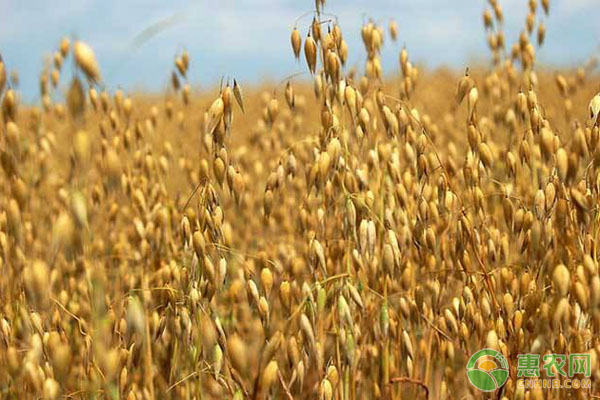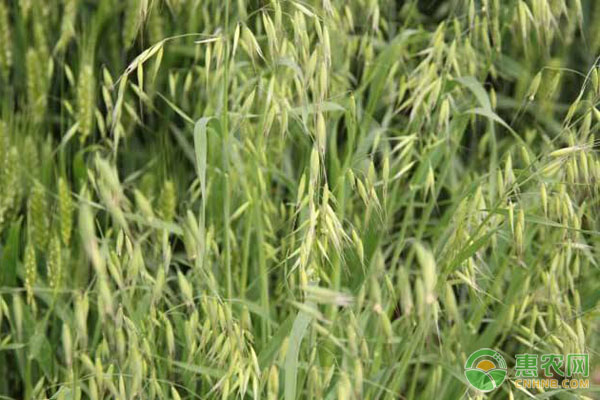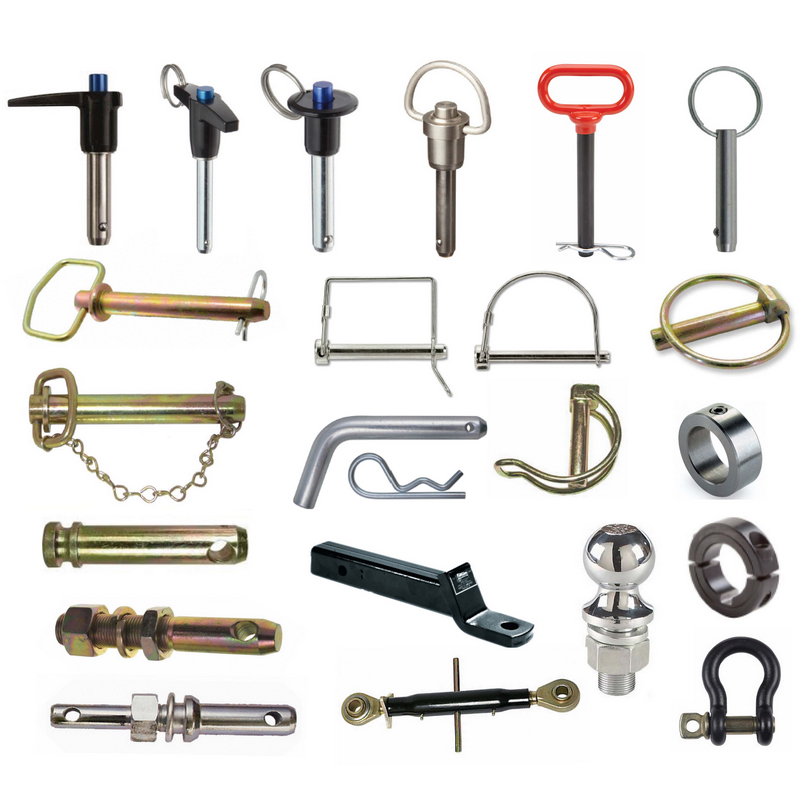Oatmeal is a kind of grain that can be used for grinding and eating. It can also be used as a feed. It has high nutritional value. Oats are grown in many areas of China. Farmers planting oats is most concerned about the production of oats, so how to achieve high yields of oats? Let's take a look at the high-yield cultivation techniques of organic oats.

Method for high-yield cultivation technology of organic oats
1. Intensive tillage
The organic oats are selected in villages with good ecological conditions, away from pollution sources, and cool and humid. The land is selected to have a deep plough layer, flat terrain, loose soil, fertile loam or sandy loam. In the cultivation of the plot, deep ploughing, fine hoeing and suppression are carried out, so as to form a soft and fine soil condition.
2, selected varieties
According to the ecological conditions and growth requirements of the wild rent, the excellent varieties such as Baiyan No. 2, Baiyan No. 11, Chuan Oat No. 1, and Ningjing No. 1 were introduced in the township for expansion at the base, and then extended to other villages. The selection of varieties mainly consists of high-quality oats with high adaptability and high quality, high yield, stress resistance and strong resistance to pests and diseases.
3, seed treatment
Seeds are cleaned before sowing, first fully drying, killing the pathogens on the surface of the seeds to improve seed viability and germination rate. Then use the phorate solution 100-150g to water 3-4kg, mix 50kg of oat seed to prevent oat yellow dwarf disease; or use 0.2% seed dressing or 0.15% seed dressing for seed dressing to control oat smut.

4, timely seeding
The suitable sowing date of oats in this area is from late March to early April. The best sowing date is before and after the Ching Ming Festival, and no later than the rain. According to the precipitation situation, the ploughing of seedlings is particularly important. Harvesting seedlings is a major measure to capture high yields of dryland oats. The sowing amount is 12~15kg/667m2, which is not suitable for spreading by mechanical sowing or artificial ditching. The line spacing is 15~20cm, and the depth is 5-6cm. It is suitable to prevent re-broadcasting and missed broadcasting. The next seed is uniform in depth and sowing. After sowing, the soil and seeds are tightly combined to prevent wind and buds.
5, field management
Weeding after emergence should be done early and shallow. In the spring drought, organic oats grow slowly, and weeds are easy to mix. The first row of tillage is not only weeding, loosening the soil temperature, cutting off the surface capillaries, reducing water evaporation to prevent drought and moisture, and regulating soil moisture, temperature and The contradiction of air promotes the development of roots, rooting early, fast rooting, establishing well-developed roots, and enhancing the ability of roots to absorb water and metabolism. Traditional planting only applies a small amount of farmyard manure, and the yield is low. With the expansion of the cultivation area and the promotion of new varieties, the application amount of farmyard manure decreased, and the amount of chemical fertilizer applied gradually increased. It is necessary to formulate fertilization according to the degree of soil fertility. In the production, the fertilizer is generally applied to the ground, and the application of nitrogen fertilizer is not applied to prevent the oats from lodging. 25% of the nitrogen-phosphorus-potassium compound fertilizer can be applied 2O ~ 40kg / 667m2, and the seedlings are fertilized in the medium term.
Weeding 2 to 3 times throughout the growth period. During the first leaf stage, weeding and weeding, weeding should be done: early removal, shallow removal, in order to improve the ground temperature and reduce water evaporation, so as to promote early rooting, fast rooting, and preserve seedlings. The second weeding was carried out before the jointing, and the weeds were removed in the middle and late stages. If the planting area is small, manual weeding can be used, and when the planting area is large, chemical weeding is used. In the case of 3 leaves and 1 heart, use 72% 2,4 D butyl emulsifiable concentrate 900 mL / 667 m2, or use 75% superstar dry suspending agent 13.3 ~ 26.6 g / 667 m2 30 kg of water, choose to be uniform on sunny days, no wind, no dew Spray. In order to increase the grain weight and improve the quality, 2kg of 50% Dumex mixture was added with potassium dihydrogen phosphate at 2.5kg/667m2 in the heading and flowering stages, and 30kg of water was sprayed, and sprayed once every 5 to 7d.
6. Pest control
Through three years of practice and observation, organic oat diseases mainly include smut, rust and powdery mildew, and insect pests mainly include armyworms and aphids. Traditional sporadic planting, crop rotation, small area, less pests and diseases, pest control mainly follow the plant protection policy of prevention and comprehensive prevention, starting from the whole ecosystem, giving priority to biological control, finally using chemical control, comprehensive use of various control measures, Create environmental conditions that are not conducive to the breeding of pests and diseases, conducive to the proliferation of various natural enemies, maintain the balance of ecosystems and biodiversity, and control all kinds of pests and diseases within the allowable economic threshold. If the demonstration film is concentrated in a piece planting, when the pests and diseases occur seriously, according to the occurrence and damage characteristics of oat pests and diseases, 50% oat seed can be mixed with 20% triazolone powder lOOg, dry mix, and now mixed or seeded after seed dressing Sowing in 3-4 hours can prevent and control smut, reduce and delay the damage of rust and powdery mildew. In the middle and late July, 25% triadimefon EC 80mL + 25% rifampicin 100mL water 30kg on oat smut, rust, aphids, etc., prevention and control interval 5-7d, continuous control twice.
7. Harvesting and storage
The harvest of organic oats is a time-sensitive work. Once mature, it should be harvested in time, otherwise the oats will fall off on their own, resulting in a bumper harvest. In my hometown, harvesting is generally from late September to early October. The grain maturity of the upper part of the organic oats and the lower part of the ear is inconsistent. When the upper part of the wheat grain enters the end of the wax, it should be harvested in time. The performance of the wax at the end of the maturity: oat stalks have toughness, and it is not easy to break. The wheat granules should be tough and not brittle. This is the timely harvest period. Harvest can be harvested manually or mechanically. When harvesting artificially, the aboveground part of oats should be cut off with a file to carry out continuous crop harvesting; when harvesting mechanically, it should be noted that the driving speed should be kept at 6-8 hr per hour. Otherwise, it will cause damage to the harvester, and it will also cause oats to leak and fall, which will seriously affect the output. The seed storage requires waterproof, rodent-proof, insect-proof, fire-proof, dry, and ventilated. The relative humidity is not more than 60%. It is managed by a person and regularly checked.

The above is the method of high-yield cultivation technology of organic oats. To achieve high yield, you can do it around the above seven points. If farmers have their own high-yield technology, they can share more. I hope this article will help you!
We provide our customers with a complete and profitable selection of quality merchandise at competitive prices. We take great pride in being a long-term supplier to many of tractor manufacturers, implement manufacturers and farm equipment retailers, supply a wild range of tractor Three-point Linkage parts, Gate Hardware and Farm Accessories.
There are hundreds of combinations of materials, heads, threads, plating, heat treating, and secondary operations. Split Pins,Lock Pins,Parallel Pins, Taper Pins, Clevis Pins, Spring Pins, Grooved Pins, Keys,Ball pin. Nails, Staples The materials and finishes including Steel, Brass, Stainless Steel, Aluminum, Zinc plating, Galvanized and Black. Providing standard and specialised Fastener solutions, coupled with industry customers.

Split Pins, Lock Pins, Clevis Pins, Spring Pins, Grooved Pins Keys
Ningbo Yokelink Machinery Co.,Limited , https://www.yokelink.com